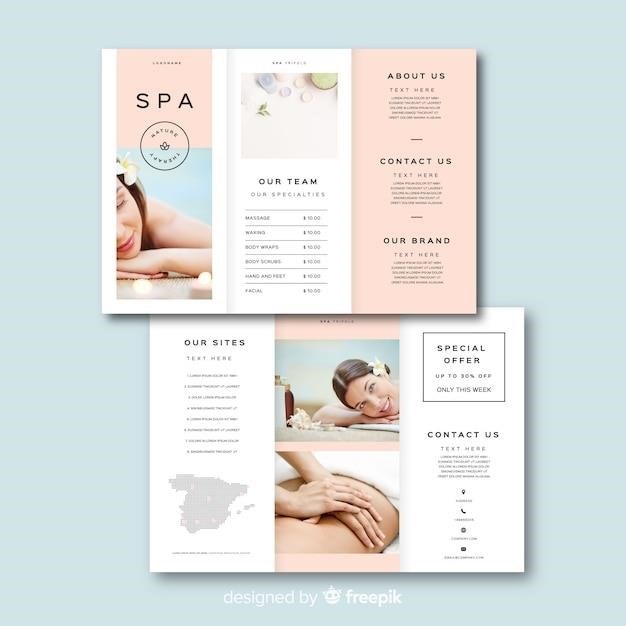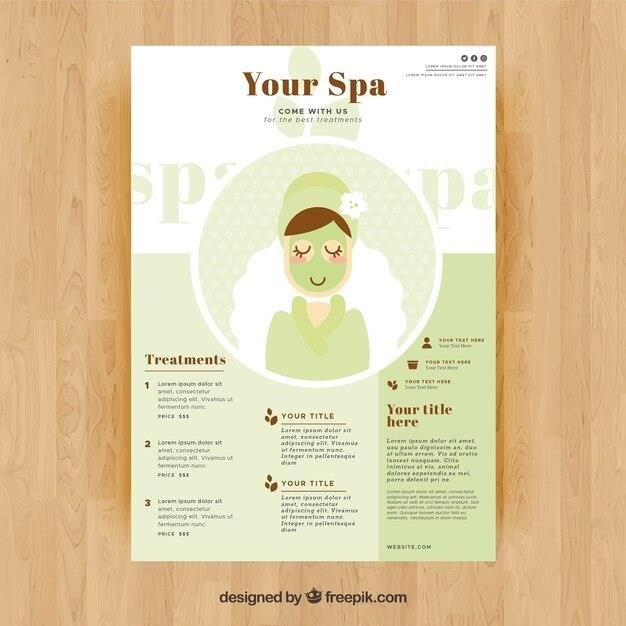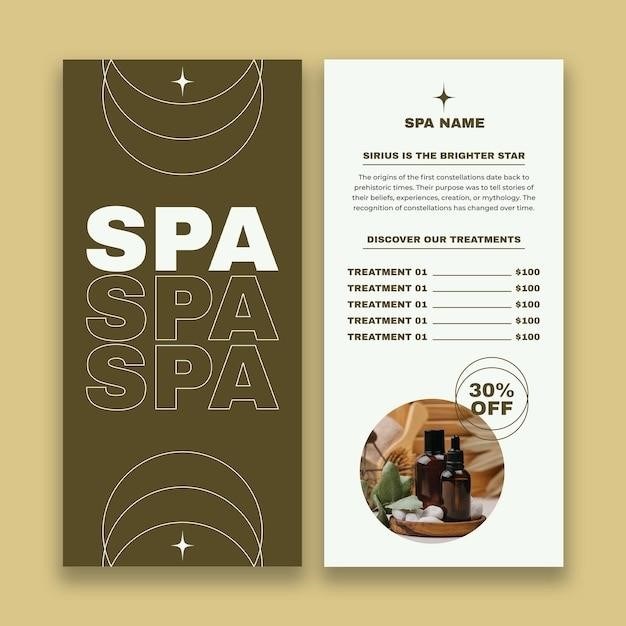Cal Spas User Manual⁚ A Comprehensive Guide
This comprehensive guide will walk you through everything you need to know about your Cal Spa, from setting it up to maintaining it. Whether you’re a new spa owner or a seasoned veteran, this manual will provide you with the information you need to enjoy your spa to the fullest.
It covers all the essential aspects of spa ownership, including electrical installation, filling, priming, operating, and maintaining your spa. This guide also provides troubleshooting tips and safety precautions to ensure a safe and enjoyable spa experience.
Whether you’re looking for information on using the control panel, understanding water chemistry, or resolving common issues, this manual will serve as your ultimate resource for all things Cal Spa.
Introduction
Welcome to the world of Cal Spas, where relaxation and rejuvenation meet. This user manual is your comprehensive guide to owning and operating your Cal Spa, a testament to Cal Spas’ commitment to providing the finest hot tubs and portable spas for sale. Our dedication to excellence extends beyond the quality of our products, encompassing the support we offer to ensure your satisfaction. This manual aims to equip you with the knowledge and tools to maximize your spa experience.
From understanding the intricacies of electrical installation and water chemistry to troubleshooting common issues and ensuring a safe and enjoyable spa environment, this guide covers all the essential aspects of spa ownership. We believe that a well-informed owner is a happy owner, and this manual serves as your comprehensive resource to navigate your Cal Spa journey with confidence.

Cal Spas is renowned for its commitment to continuous improvement. We strive to enhance our products and services, and this user manual reflects the latest advancements in technology and design. Whether you’re a first-time spa owner or a seasoned enthusiast, this guide provides the information you need to enjoy your Cal Spa to the fullest.
Please take the time to read through this manual thoroughly. Familiarizing yourself with its contents will not only enhance your understanding of your spa but also contribute to its longevity and performance. At Cal Spas, we value our customers and are dedicated to providing the best possible experience. Should you have any questions or require further assistance, do not hesitate to contact our dedicated customer support team.
Setting Up Your Cal Spa
Setting up your new Cal Spa is an exciting step towards enjoying the benefits of hydrotherapy. This section will guide you through the process, ensuring a smooth and successful installation. Before you begin, familiarize yourself with the pre-delivery checklist included with your spa. It outlines important considerations, such as obtaining necessary permits and planning your delivery route.

First, choose a suitable location for your spa. Consider factors like accessibility for service, sunlight exposure, and proximity to power outlets. Ensure adequate clearance for service access, allowing for a minimum of three feet / one meter access to all sides of the spa.
Next, prepare the foundation for your spa. It is crucial to provide a stable and level surface to prevent damage and ensure proper operation. Consult the specific installation instructions provided for your model for detailed guidance.
Once the foundation is in place, focus on electrical installation. Cal Spas prioritizes safety and recommends engaging a qualified electrician to handle this crucial step. The installation process involves connecting your spa to a dedicated electrical circuit with a ground fault circuit interrupter (GFCI). This ensures protection against electrical shocks. Refer to the wiring requirements outlined in the manual for your specific model.
Finally, you are ready to fill your spa; Before you begin, ensure the water source is clean and free of contaminants. Use a garden hose with a flow rate of at least 5 gallons per minute for optimal filling time.
Electrical Installation
Electrical installation is a crucial step in setting up your Cal Spa. Ensuring proper and safe electrical connections is essential for both the spa’s operation and your safety.
Cal Spas emphasizes the importance of working with a qualified electrician for this process. They are equipped with the knowledge and expertise to handle the electrical requirements of your spa correctly and safely.
Before you begin, review the wiring requirements for your specific spa model. These requirements will vary depending on the control system and power source. For instance, 230V spas typically require four 10 AWG copper wires, while 120V spas may need different wire specifications.
The electrical installation process involves connecting your spa to a dedicated circuit with a ground fault circuit interrupter (GFCI). This is a safety feature that protects against electrical shocks by interrupting the flow of electricity if a ground fault is detected.
Ensure that the electrical circuit you choose is properly sized for your spa’s power requirements. A dedicated circuit is essential to avoid overloading existing circuits and potentially causing damage to your spa or your home’s electrical system.
Once the electrical installation is complete, it is important to test the GFCI plug before using the spa for the first time. This ensures that the GFCI is working properly and providing adequate protection.
For detailed instructions and diagrams on the electrical installation process, refer to the specific electrical installation guide provided with your Cal Spa.
Filling Your Cal Spa
Filling your Cal Spa is a straightforward process, but it’s essential to follow the right steps to ensure proper water quality and prevent potential issues. Before you start, make sure your spa is placed on a level foundation and the electrical installation is complete.
First, locate the spa’s fill valve, typically found near the bottom or side of the spa. Connect a garden hose to the fill valve and turn on the water. Start filling the spa slowly, allowing the water to spread evenly throughout the basin. Avoid overfilling the spa, as this can put stress on the spa’s structure and potentially cause damage.
Cal Spas recommends using a pre-filter for well water to remove impurities and contaminants. This pre-filter should be placed before the spa filter in the fill-up flow of water. Once the spa is filled, have a Total Dissolved Solids (TDS) and metals test performed by a qualified professional to assess the water quality.
While filling, ensure that the skimmer basket is in place. The skimmer is responsible for capturing debris and leaves, helping to maintain water clarity.
Once the spa is filled to the appropriate level, you can turn off the water supply. If you encounter any issues during the filling process, consult the troubleshooting section of your Cal Spa user manual for guidance.
Remember to always use clean, fresh water to fill your spa. Avoid using water from sources that may be contaminated or contain high levels of minerals.
By following these steps, you’ll ensure a smooth and efficient filling process, setting the stage for a relaxing and enjoyable spa experience.
Priming the Pump
Priming the pump is essential for ensuring your Cal Spa’s circulation system works correctly. This process involves filling the pump with water to remove any air pockets that could hinder its operation. Here’s how to prime your pump⁚
First, locate the pump and ensure it’s turned off. You’ll find the pump near the spa’s filtration system. The pump typically has a clear lid or a sight glass, allowing you to see the water level inside.
Open the lid or sight glass and check the water level. If the pump is dry or has an air pocket, you’ll need to prime it. Open the pump’s drain valve to release any existing water. Then, use a garden hose to slowly pour water into the pump until it’s full.
Once the pump is full, close the drain valve. Turn on the spa’s power and let the pump run for a few minutes. This will help push any remaining air out of the pump. During this process, you may hear some gurgling sounds as the air is expelled.
Keep an eye on the water level in the pump. If it drops, add more water through the fill valve.
If the pump still doesn’t prime after a few minutes, check for any leaks or blockages in the system. If you can’t find the problem, consult the troubleshooting section of your Cal Spa user manual or contact a qualified service technician.
Once the pump is primed, you can enjoy the benefits of proper circulation, ensuring clean and sanitized spa water.
Operating Your Cal Spa
Once your Cal Spa is filled, primed, and ready to go, operating it is a breeze. The control panel provides easy access to all the features and settings. Familiarize yourself with the control panel’s layout and functions to ensure you can adjust the temperature, filtration cycles, and other settings to your liking.
Your Cal Spa offers various heating modes to suit your needs. Choose from “Ready” mode, which heats the water quickly for immediate use, and “Rest” mode, which maintains a lower temperature for energy efficiency when the spa is not in use. You can also set the desired temperature range, typically between 60°F and 104°F, depending on your preferences and comfort level.
The filtration system is essential for maintaining clean and healthy spa water. The control panel allows you to set the filtration cycle duration, typically in 15-minute increments. This ensures regular circulation and filtering of the water, removing debris and impurities.
Be mindful of the spa’s automatic timeouts, which are designed for safety and energy efficiency. These features will turn off the spa after a period of continuous use. You can adjust these settings according to your usage patterns.
Remember to use the air venturis sparingly, as they can cool the water quickly and dissipate chemicals. For optimal efficiency and chemical balance, follow the recommended operating guidelines outlined in your Cal Spa user manual.
Using the Control Panel
The control panel is your central hub for managing all aspects of your Cal Spa. It provides a user-friendly interface for adjusting temperature, filtration, and other features. Whether you have a spaTouch-1 icon-driven control panel or a traditional TP400 or TP600 control panel, the basic principles remain the same.
The spaTouch-1 panel features a clear and intuitive touchscreen interface. You can easily navigate through the menus using the icons and touch gestures. This control panel allows you to customize settings like temperature, filtration, lighting, and even language preferences. For a more traditional experience, the TP400 and TP600 panels utilize buttons and a display screen.
To adjust the temperature, simply press the “Warm” or “Cool” buttons on the TP400 or TP600 panels or use the temperature slider on the spaTouch-1 panel. The set temperature will flash until you confirm it, after which the spa will start heating or cooling the water to the desired temperature.
The control panel also allows you to set the filtration cycle duration. You can choose from various settings, typically in 15-minute increments, to ensure regular water circulation and filtering. The TP400 and TP600 panels typically offer two filtration cycles, while the spaTouch-1 panel may offer more options depending on your spa’s model.
Familiarize yourself with the control panel’s functions and features to ensure you can operate your Cal Spa effectively and enjoy a relaxing and enjoyable spa experience.
Maintaining Your Cal Spa
Regular maintenance is crucial for keeping your Cal Spa in optimal condition and extending its lifespan. This involves a combination of tasks, from cleaning the filters and checking water chemistry to performing routine inspections and addressing any issues promptly.
Start by cleaning the filters regularly. Depending on your spa’s usage, this could be weekly or even more frequently. Remove the filter cartridges, rinse them with a garden hose, and allow them to air dry completely before reinstalling them. You can also use a filter cleaner for deeper cleaning, following the manufacturer’s instructions.
Water chemistry is equally important for maintaining a clean and healthy spa environment. Regularly test the water’s pH, alkalinity, and sanitizer levels using a test kit. Adjust these levels as needed using chemicals specifically designed for spas. Maintaining proper water chemistry helps prevent the growth of bacteria, algae, and other contaminants.
Inspect your spa regularly for signs of wear and tear. Check the pump, heater, jets, and other components for any damage or leaks. Address any issues promptly to avoid potential problems and ensure your spa continues to function properly. This includes ensuring the spa’s cover is in good condition and fits snugly, preventing heat loss and minimizing debris buildup.
Following these maintenance practices will ensure your Cal Spa remains clean, safe, and ready for you to enjoy for years to come.
Water Chemistry
Maintaining proper water chemistry is essential for a clean, healthy, and enjoyable spa experience. It helps prevent the growth of bacteria, algae, and other contaminants, ensuring your spa remains safe and comfortable for everyone to use.
You’ll need to regularly test the water’s pH, alkalinity, and sanitizer levels using a test kit. pH measures the water’s acidity or alkalinity, with a range of 0 to 14, with 7 being neutral. For a spa, the ideal pH range is between 7.2 and 7.6. Alkalinity, also known as total alkalinity, measures the water’s ability to resist pH changes, with a range of 80 to 120 ppm being optimal for spas.
Sanitizer levels are crucial for killing bacteria and keeping the water clean. Chlorine and bromine are common spa sanitizers, and their levels should be maintained within the recommended range. You can use test strips or a digital test kit to determine the sanitizer level and adjust it accordingly.
Maintaining proper water chemistry involves balancing these three factors. If the pH is too low, the water becomes acidic, which can irritate skin and eyes. If the pH is too high, the water becomes alkaline, which can cause scaling and cloudiness. Similarly, if the alkalinity is too low, the pH can fluctuate significantly, while too high an alkalinity can lead to scaling.
By regularly testing and adjusting the water chemistry, you ensure a safe and enjoyable spa experience. Remember to follow the manufacturer’s guidelines and consult with a spa professional if you have any questions or concerns.
